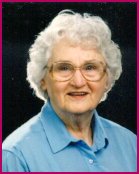![]()

directed by
Jim Murphy
produced by
Gail Gauthier
|
|
81st Season, 2001
February 9, 10, 16, 17, 18, 23, 24
|
The Price tells the story of two brothers estranged for sixteen years-one a successful surgeon; the other a policeman-who reunite in an old brownstone attic to dispose of their deceased father's belongings and to battle over the past that the furniture represents. The furniture, which is desired by a comic 89-year-old Jewish antiques dealer, provides the occasion for the brothers to confront their feelings about each other, their father, the family, and their own lives. The conflict, the basic jealousy and the lifetime of, if not hatred, at least corrosive, though unacknowledged anger, is between two brothers, as well as resentment against a selfish, child-devouring father. The siblings meet, after a 16 year estrangement, in the attic of the family residence, where the old furniture is to be disposed of. The first is a policeman who sacrificed his education and probably a career as a scientist to care for his ruined, invalid father. The other, who arrives late, is an eminent surgeon who walked out on the demands of family to concentrate on medicine and personal success. Miller works up to the showdown scene slowly. The policeman and his wife first talk of the past and the present to fill in some of the background. Then there is a very long, richly amusing, curiously revealing and enjoyable scene between the policeman and a marvelously crotchety, humorous and wise old Jewish dealer who has come to buy the furniture but refuses to set a price without prolonged philosophic conversation. When the surgeon arrives, the brothers take a little time for the amenities and feeling each other out before the basis of their long alienation and mutual bitterness emerges into short, blunt, enraged accusations. It is a taut, exciting and superbly theatrical scene, and it reveals the characters, including strengths and weaknesses, of the brothers to each other and themselves - as well as to the audience. The Price originally opened on Broadway on February 7, 1968 at the Morosco Theatre and ran for 429 performances. Ulu Grosbard directed a cast that included Harold Gary, Pat Hingle, Arthur Kennedy, and Kate Reid. The play received two Tony Award nominations, including one for best play. George C. Scott received an Emmy Award for an acclaimed television production of the play, which co-starred Colleen Dewhurst. |
 |
for tickets
|
 |
 |
|
The
Cast
|
||
|
Ester
Franz
|
Leslie Wagner | |
|
Victor
Franz
|
Jackson Royal | |
|
Walter
Franz
|
James
Grana |
|
|
Gregory
Solomon
|
Jack
Sweet |
|
|
The
Production Crew |
||
| Director |
||
| Producer |
Gail Gauthier | |
| Stage
Mgr |
Judy Forgione | |
| Props |
Heddie Kent | |
| Lights |
Susan Tucker | |
| Sound |
||
| Set
Design |
Susan Sanders | |
| Set
construction |
David Atwood | |
| Set
construction crew |
Charlie Atherton | |
| Costumes |
Gladys Foreman | |
| Make
up |
Birgitta Knuttgen | |
| publicity |
Stefanie Cloutier | |
| Photography |
Rik Pierce | |
| Program |
Iain Bason | |
















